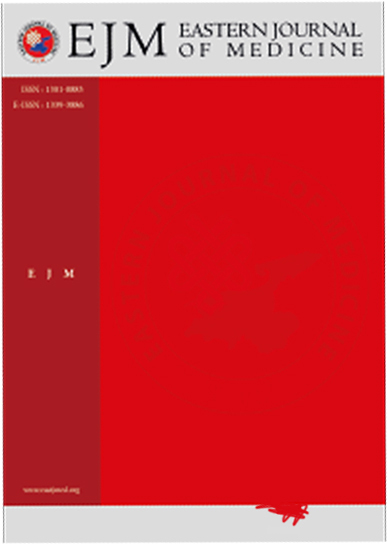Doxorubicin and gallic acid induce oxidative stress-induced cell death in laryngeal cancer cells via the TRPM2 channel
Ramazan Çınar1, Tahir Çakır2, Betül Yazğan3, Kenan Yıldızhan21Department of Biophysics, Faculty of Medicine, Bilecik Seyh Edebali University, Bilecik, Türkiye2Department of Biophysics, Faculty of Medicine, Van Yuzuncu Yil University, Van, Türkiye
3Department of Physiology, Faculty of Medicine, Kastamonu University, Kastamonu, Türkiye
INTRODUCTION: Laryngeal squamous cell carcinoma is one of the most common fatal cancers. The chemotherapeutic agent doxorubicin (DOX) has limited efficacy due to frequent side effects and the development of drug resistance during treatment. Therefore, we aimed to investigate whether Gallic acid (GA) has a synergistic effect on the chemotherapeutic effects of DOX and the mechanisms of its action.
METHODS: In order to do this, we looked at how GA stimulates the death of HEp-2 laryngeal cancer cells caused by DOX through the activation of TRPM2 channels. For the study, HEp-2 cells were divided into four groups: Control, GA, DOX, and GA+DOX. Cell viability, antioxidant and oxidant enzyme activity levels, inflammation markers, intracellular ROS levels, apoptosis markers, PARP-1 and TRPM2 expression values were evaluated.
RESULTS: DOX treatment caused cytotoxic effects in laryngeal cancer cells and increased apoptosis markers, intracellular ROS, inflammation markers, oxidant enzyme activity levels, PARP-1 and TRPM2 values, while decreasing cell viability and antioxidant enzyme activity values. The therapy was significantly more successful when GA and DOX were used together.
DISCUSSION AND CONCLUSION: In summary, this study discovered that TRPM2 activation caused the synergistic impact of GA+DOX combination therapy on cancer cell death.
Keywords: Doxorubicin, Gallic acid, Oxidative stress, HEp-2 cell, PARP-1, TRPM2 channel
Manuscript Language: English














